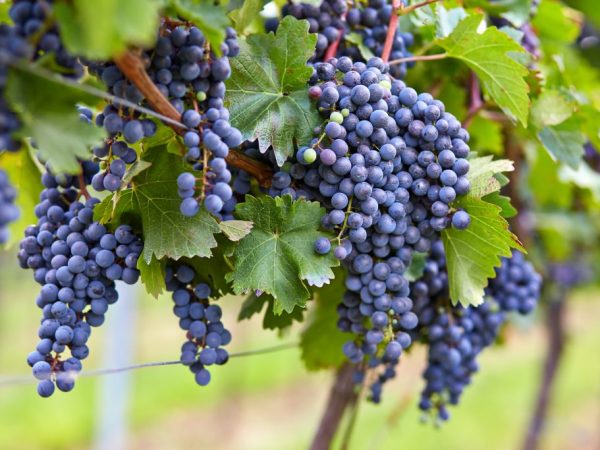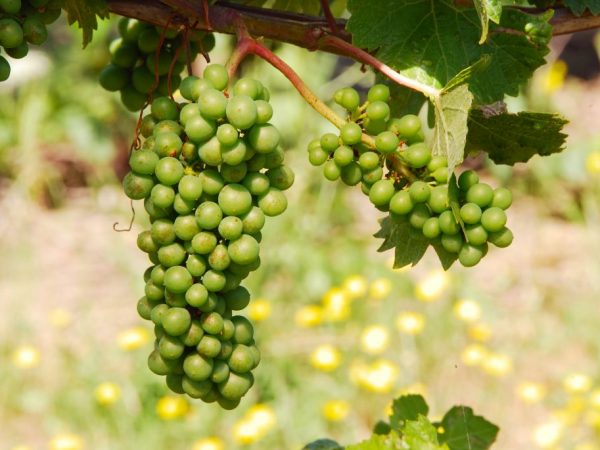Russian gardening and viticulture
Domestic horticulture and viticulture is mainly developed in a number of individual regions, where about 90% of all Russian vineyards are located.

Russian gardening and viticulture
Features of Russian viticulture
Winemaking in Russia dates back to the reign of Peter I. By the end of the 19th century, there were 5 main vineyards with annual volumes of wine produced:
- Bessarabsky - about 810 thousand liters;
- Donskoy - about 30 thousand liters;
- Astrakhan-Uralsky - about 5.2 thousand liters;
- Kavkazsky - about 1 million 130 thousand liters;
- Turkestan - about 165 thousand years.
During the Soviet era, large industrial viticulture enterprises were created. After the collapse of the Soviet Union, the area of domestic vineyards was significantly reduced, transferring Russian winemaking to imported raw materials.
Viticulture in Russia currently occupies about 55 thousand hectares and is concentrated mainly in the regions of the North Caucasus, including the Krasnodar Territory and Dagestan. Vineyards occupy a narrow strip with borders running along the basins of the Black and Caspian Seas.
Russian viticulture is one of the twenty leaders in wine production.
A feature of Russian viticulture is the need to cultivate horticultural crops in difficult climatic conditions, therefore, the Black Sea region and the regions located south of Makhachkala are suitable for growing grapes on open vineyards. The rest of the regions are capable of growing grapes only with winter cover.
Domestic varieties
Several main domestic varieties of grapes are grown on the territory of Russia:
- up to 76.3% - technical varieties, including the well-known Riesling and Aligote, Cabernet Sauvignon Rkatseteli, Muscat and Saperavi, Traminer and Bianca, Pinot Noir and Mtsvane,
- up to 23.7% - table varieties, including Amber, Uzbek and Hamburg Muscat, Shasla, Cardinal, Moldova, Saba.
No less common are universal grape varieties that combine the qualities of technical and table varieties: Muscat of Hungary, Galan, Violet, Doina.
Wine regions
On the territory of Russia there are 5 main regions where domestic horticulture and viticulture are developed.
Krasnodar region
On the territory of the Krasnodar Territory, about 60% of all wine-growing areas in Russia are concentrated in several industrial zones: Azov, Taman, Black Sea, North Caucasian and Center. The total area of Krasnodar vineyards is about 37 thousand hectares.
The Krasnodar Territory has a mild and warm climate for horticulture, viticulture and winemaking and has a number of geographical advantages:
- It is located in the west of the warm Caucasus region, where the air warms up to 5 ° C in winter.
- The north is expressed mainly by plains, where the average air temperature in winter does not drop below -5 ° C.
- In the south of the region, there is a foothill of the Greater Caucasus Range, which protects the area from sudden changes in temperature.

Krasnodar Territory is great for growing grapes
Krasnodar viticulture is mostly uncovered. Only in the northernmost regions, due to severe winter frosts, vines are sheltered for the winter.
The soil in the Krasnodar Territory mainly consists of fertile chernozem, which makes it possible to grow about 27 technical varieties, about 22 table species and more than 5 universal grape varieties with a total yield of up to 200 thousand tons.
Dagestan
During the Soviet era, Dagestan was one of the largest wine-growing regions for growing grapes and producing wines. Today the area of Dagestan vineyards has decreased to 22.8 thousand hectares. Up to 100 thousand tons of berries are harvested from them.
The mountainous terrain of Dagestan divides the territory into several industrial zones, among which viticulture develops most successfully in the plateau and foothill areas with northern and southern zones:
- The flat zone in the south of Dagestan is characterized by moderately warm weather with an arid continental climate and a minimum temperature in winter - up to -15 ° С. In flat terrain, vineyards are not sheltered for the winter. The soil is represented by chestnut textures with clay. The largest vineyard of the plateau is the massif in Derbent, where favorable weather makes it possible to grow all varietal varieties of grapes with different ripening periods. The advantage for technical varieties.
- The southern foothills are located at an altitude of 500-600 m above sea level. Dessert and table varieties are grown here. Climatic conditions make it possible not to cover the vines in winter.
- The northern foothill and flat areas cover territories located at an altitude of 500 m above sea level, including the Terek-Sulak plain and the Terek delta. There are dry, hot and long summers with frosty winters at the same time, when the air temperature drops below -25 ° C, so the grapes are grown in shelters.
Rostov region
The Rostov region belongs to a risky area where grapes are grown using covering technology. It is permissible to grow horticultural crops using non-covering techniques in the southern regions of the Rostov region.
A number of varietal varieties grown in Rostov vineyards compete with French winemaking.
The region is oriented advantageously on the cultivation of technical varieties for the production of sparkling wines.
Stavropol region
In the Stavropol Territory, about 13% of the area of domestic vineyards (more than 6.5 thousand hectares) is concentrated, giving up to 15% of the total gross volume of garden crop harvest in Russia. This is one of the leading industrial regions of viticulture and horticulture in Russia.
On the territory of the Stavropol Territory, a number of research institutes, as well as about 40 fruit-growing enterprises, are engaged in the cultivation and sale of grape seedlings.
Crimea
On the territory of Crimea, technical varietal varieties are mainly grown, which are used for the production of fortified and dessert wines. The total number of varietal species reaches 100. The favorable Crimean climate and fertile soils contribute to the high yield of vineyards.
Among the main regions involved in viticulture and winemaking are the foothill Bakhchisarai, steppe near Simferopol, suburban Yalta, Alushta and Sudak.
Conclusion
Modern Russian viticulture and winemaking is concentrated in a number of the main Russian regions, suitable in climatic conditions for the cultivation of technical, table and universal varieties of horticultural crops.

